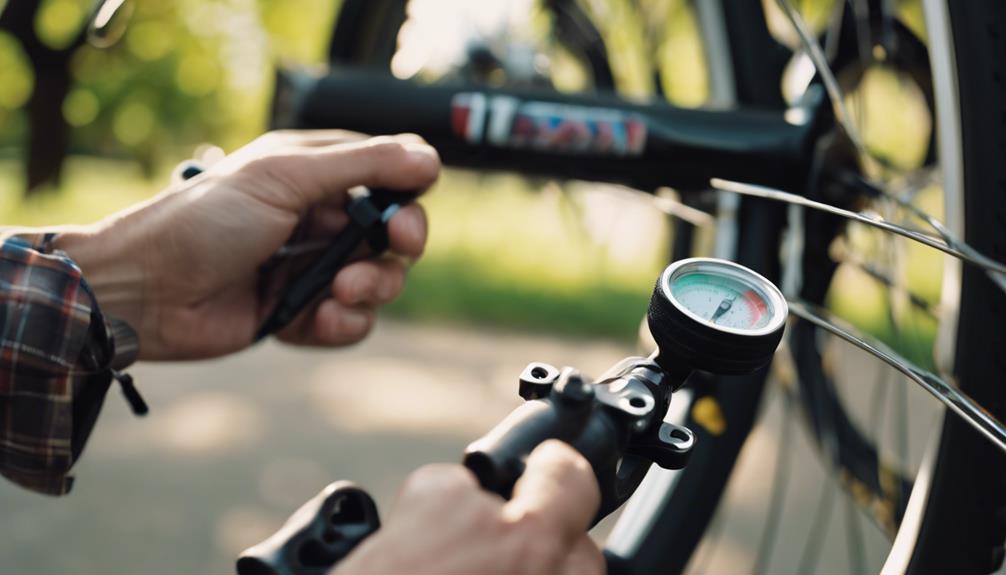Mountain biking is an exhilarating sport that combines adventure, fitness, and the thrill of conquering challenging terrains. Among the various types of mountain bikes available, the 26-inch mountain bike has carved out a niche, especially among enthusiasts who appreciate its unique characteristics. This article delves into the features, benefits, and considerations of 26-inch mountain bikes, providing valuable insights for both novices and seasoned riders.
The Basics of Mountain Bike Sizing
Mountain bikes come in various sizes, and choosing the right one is crucial for performance and comfort. The wheel size is one of the most significant factors, influencing the bike’s handling, stability, and overall ride quality. The 26-inch wheel size has been a standard for many years, but it’s essential to understand how it compares to other sizes.
Wheel Size Comparison
Mountain bikes generally come with three main wheel sizes: 26 inches, 27.5 inches (650B), and 29 inches. Each size has its advantages and disadvantages:
- 26-Inch Wheels: Known for their agility and maneuverability, making them ideal for technical trails.
- 27.5-Inch Wheels: A versatile option that combines some benefits of both 26-inch and 29-inch wheels, offering better rollover capability and stability.
- 29-Inch Wheels: Great for smooth rides over obstacles and providing better speed on flat terrain.
Advantages of 26-Inch Mountain Bikes
The 26-inch mountain bike has several distinct advantages that appeal to specific types of riders:
1. Maneuverability
One of the primary benefits of a 26-inch mountain bike is its agility. Riders can easily navigate tight corners and technical sections of trails, making it an excellent choice for those who enjoy challenging terrains.
2. Lighter Weight
Generally, bikes with smaller wheels tend to be lighter. A 26-inch mountain bike can be less cumbersome, which allows for easier handling and more responsive performance during climbs and descents.
3. Cost-Effectiveness
As the industry has shifted towards larger wheel sizes, many manufacturers offer 26-inch mountain bikes at lower prices. This makes them an attractive option for beginners or those on a budget.
4. Robustness
With a smaller wheel size, 26-inch bikes often come with a stouter frame, which can enhance durability. This makes them suitable for rugged trails where the bike might face significant wear and tear.
Considerations When Choosing a 26-Inch Mountain Bike
While there are many advantages to 26-inch mountain bikes, potential buyers should consider several factors:
1. Terrain Compatibility
26-inch bikes excel on technical and steep trails but may struggle on smooth, fast sections. It’s essential to evaluate the types of trails you plan to ride.
2. Rider Height and Style
Rider height can influence the suitability of a 26-inch bike. Taller riders may find 26-inch wheels less comfortable compared to larger sizes. Additionally, the riding style—whether aggressive downhill riding or leisurely trail riding—should factor into your choice.
3. Availability of Parts
As the industry moves towards larger wheel sizes, finding replacement parts for 26-inch bikes might become increasingly difficult. It’s prudent to consider the long-term availability of components.
Popular Models of 26-Inch Mountain Bikes
Here are some notable models of 26-inch mountain bikes that have garnered positive reviews from the biking community:
- Specialized Stumpjumper: A classic all-around mountain bike known for its lightweight and durability.
- Trek Marlin: A versatile bike that balances performance on both trails and roads.
- Giant Talon: Offers excellent stability and control, ideal for beginners.
- Cannondale Trail: Recognized for its responsive handling and comfortable ride.
Case Studies: Riders’ Experiences with 26-Inch Mountain Bikes
To gain a deeper understanding of the 26-inch mountain bike experience, let’s explore some real-world testimonials from riders:
Case Study 1: Sarah, the Weekend Warrior
Sarah, a casual rider who enjoys weekend trips to the mountains, shares her experience with her 26-inch bike:
“I love my 26-inch bike because it allows me to tackle technical trails without feeling like I’m losing control. The lightweight frame makes climbing easier, and I feel confident maneuvering through tight spots.”
Case Study 2: Jake, the Competitive Racer
Jake, an avid racer who participates in local competitions, highlights his preference for the 26-inch model:
“In races, agility is crucial. My 26-inch mountain bike feels more responsive in sharp turns, giving me an edge over my competitors on technical courses.”
Maintenance Tips for 26-Inch Mountain Bikes
Regular maintenance is key to ensuring your 26-inch mountain bike performs optimally. Here are some essential maintenance tips:
- Regular Cleaning: Clean your bike after rides to prevent dirt and grime buildup.
- Check Tire Pressure: Ensure your tires are adequately inflated for better handling and performance.
- Inspect Brake Pads: Regularly check the condition of your brake pads and replace them if necessary for safe riding.
- Lubricate the Chain: A well-lubricated chain reduces wear and improves shifting performance.
Conclusion
The 26-inch mountain bike remains a viable option for many riders despite the industry’s shift towards larger wheel sizes. Its agility, lightweight nature, and cost-effectiveness make it an attractive choice for both newcomers and experienced bikers who thrive on technical trails. However, potential buyers should consider their riding style, the terrain they frequent, and the long-term availability of parts before making a purchase.
Ultimately, the best bike is the one that fits your individual needs and enhances your riding experience. Whether you choose a 26-inch mountain bike or explore other options, the journey of mountain biking promises adventure, fitness, and a profound connection with nature.
